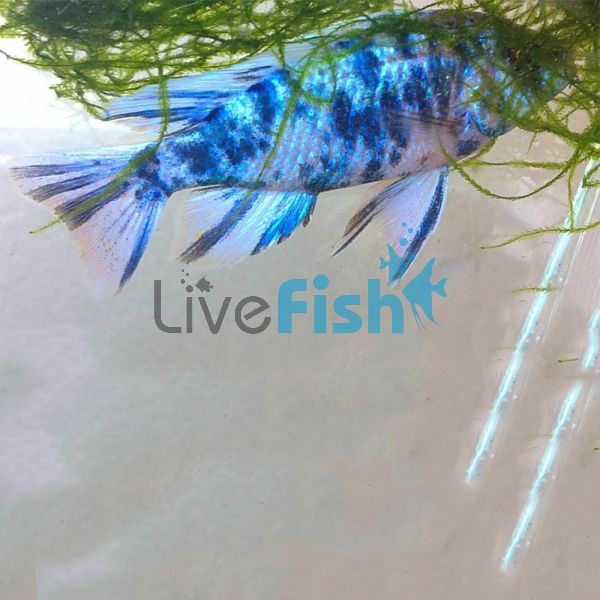Marbled Peacock 5cm
For the aquarists looking for a large growing, immensely colourful and downright stunning fish, the marbled peacock cichlid would be the perfect option. With a large enough tank, these fish are quite easy to keep and their beauty along makes them a fantastic display tank consideration.
- Buy 4 for $26.01 each and save 20%
- Buy 6 for $22.76 each and save 30%
Marbled Peacock
For the aquarists looking for a large growing, immensely colourful, and downright stunning fish, the marbled peacock cichlid would be the perfect option. With a large enough tank, these fish are quite easy to keep and their beauty alone makes them a fantastic display tank consideration.
Also known as OB peacocks, these fish get their name from the striking and random patterning through the body. This can actually be a range of different colours that include blue, orange, purple, pink, and more. The greatest thing here is that every fish is different and will grow up to showcase different colouration and patterning which makes them individually special. Since the marbled peacocks are selectively bred to achieve the patterning and colours, it does make for a great breeding project as well to try to experiment with. These fish do get fairly since they max out at 17 cm and African peacocks in general are commonly known to be semi-aggressive fish.
They however only display aggression when it comes to territory, social hierarchy, and breeding. Trying to find the males and females in African peacocks is fairly easy. The easiest method is to look at the egg spots on the anal fin of the fish. Males will have lots whereas females will have little to none, another common method is to look at the tips of the dorsal and anal fin. In males, these tend to be more pointed whereas in females they are rounded. The wild habitat of African peacock cichlids in lake Malawi.
Tank Recommendations for your Marbled Peacock Cichlid
The Marbled peacock is a very active fish that needs a tank that is at least 470 liters and around 4 feet minimum length. The main consideration for these fish is actually the aquarium environment itself. Since marbled peacock cichlids can be aggressive to one another, it is best to have a lot of visual breaks in the tank.
These fish also need a higher PH of around 8.0, this can be maintained through the use of crushed coral or aragonite sand and conditioning salts. To also make the colours pop on the marbled peacocks, keeping them on a dark background would also be great.
Suitable Tank Buddies
The marbled peacock is fairly peaceful and can be kept with other colour variations of the peacock species. Overstocking peacocks in aquariums is common to avoid aggression or territorial behavior, however, this can lead to more water changes and maintenance. This can be avoided by keeping minimal fish in a large aquarium with lots of visual breaks. Consideration can be made to keep them with peaceful Mbunas and Haps.
Usually Compatible
Other African peacocks like dragon blood or neon blues and other common species such as electric yellow labs.
Sometimes Compatible
Larger haps such as venustus, Fuscodichromis, and small Africans such as julidochromis.
Rarely Compatible
Shrimp and nano aquarium fish like neon tetras, ember tetras, and also very aggressive South American cichlids such as Oscars and Jaguar Cichlids.
Feeding your Marbled Peacock Cichlid
Marbled peacocks like other peacock cichlids are very easy to feed. It is an opportunistic feeder and will readily eat a wide range of foods being both dry, fresh, and frozen. Their diet should contain good quality African cichlid pellets with high contents of spirulina or greens. Feeding these fish once a day will be perfectly fine.
| Scientific Name | Aulonocara Sp.Ob Form |
|---|---|
| Care Level | Moderate |
| Common Names | Omnivore - prefers herbivore based diet. |
| Diet | Omnivore |
| Fish Family | Cichlidae |
| Lifespan (years) | 15 |
| Max. Length (cm) | 17 |
| Min. Tank Volume (l) | 470 Litres |
| Origin | Africa |
| Reef Safe | No |
| Sociability | Semi-aggressive |
| Venomous | No |
| Water Conditions | 24-26° C, pH 8.0-8.5 |




